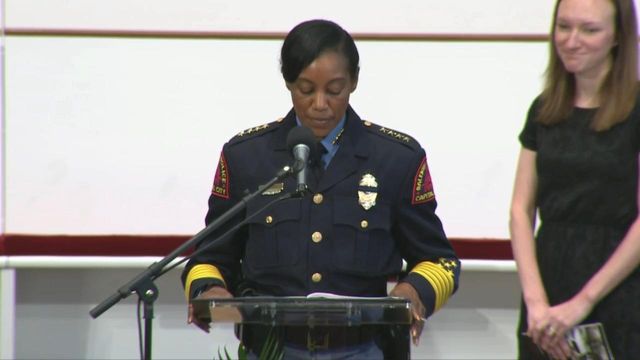Coming Home: WWII soldier identified and buried 77 years after his death

On the morning of Sept. 8, 1944, Soldiers with the 5th Infantry Division were ordered to cross the Moselle River and take up a position in the woods.
After heavy losses, the men retreated across the river two days later, though some stayed behind to search for wounded or missing Soldiers before crossing again.
First Lt. James E. Wright was one of the men who stayed behind. Having already taken a boat to the German-occupied side of the river and rescuing three wounded Soldiers, he went back across the river, in the vicinity of Dornot, France, and was never seen again.
His niece, Diane Merkt, who was one year old when Wright went missing, said the family never gave up hope that her uncle would return home.

“His mother always used to say that she knew she would be working out in the yard, the house is right over there, and she’d look up and see him walking up the drive from the Highway,” Merkt said. “She never stopped hoping that, and now he’s going to be right here with her.”
Merkt was sitting in the Oakdale Cemetery in Lumber Bridge, North Carolina, on Oct. 12, 2021, 77 years after Wright went missing, and pointed across the neighboring field to where the family’s home still stood.
Wright did come up the drive from the highway, only not walking as his mother had hoped. Instead, his remains were carried on a horse-drawn funeral caisson, casket draped in an American flag, with a procession of family, community members, and North Carolina National Guard Soldiers and Airmen (NCNG) following behind.
In July, a few months before Wright’s funeral, his family received the call that his remains had been positively identified.

“To get the call after 77 years of knowing your family member was missing and of course pronounced dead; chills,” said U.S. Air Force Staff Sgt. Sidney Brookman, a K-9 handler with the 20th Security Forces Squadron and Wright’s great-grandniece. “My grandmother called me at about 9:30 at night and was saying ‘the craziest thing just happened, you’ll never guess, they identified your uncle Wright.’”
Brookman served as the escort for Wright’s remains from the facility in Colorado where they were identified, all the way home, where he was buried.
“It’s very rare that a relative actually escorts a family member home,” Brookman said. “For me to be able to be chosen to do that, my great grandmother asked for me to be the escort; for her to put the trust in me is an honor.”
Wright’s family was not alone in waiting so long to have a family member returned home. According to the Defense POW/MIA Accounting Agency, more than 70,000 Americans remain unaccounted for from WWII.
Brookman said she hopes others who are still missing family members will see her great-granduncle’s story and know that there is still hope their remains will return home.

Wright, who received a Silver Star, Bronze Star, and Purple Heart, was described by his family as a handsome man who was kind and wanted to help others and cared about his community.
Although he was transferred to the 5th Inf. Div. in 1942, his military service started in the neighboring town of Parkton, N.C., where he was a member of L Co., 120th Infantry Regiment, a unit that is part of the lineage of today’s 1st Battalion, I 20th Inf. Reg., 30th Armored Brigade Combat Team (ABCT), NCNG.
Col. Wes Morrison, commander of the 30th ABCT, saw this as the N.C. Guard bringing home one of their own.
“When the army says leave no comrade behind, this is really what it means, because they never stop looking for the missing in action,” Morrison said.
Before being identified, Wright was one of the many service members whose name was memorialized on the Walls of the Missing at the Epinal American Cemetery in Dinozé, France.
A rosette will be placed next to his name on the wall, signifying that he is no longer missing.
Morrison has traveled to the American cemeteries in Europe many times as part of the 30th Infantry Division association, whose members are WWII and Iraq veterans who served in combat with the 30th.
“I’ve often wondered how those stories came to be and what was the final resolution when those Soldiers came home,” Morrison said. “Now I will know the whole story behind that when I get to see Lt. Wright’s name with a rosette next to it next time I’m in Europe.”
Wright’s sister, Elizabeth Wright Harper, who is now 100 years old, said she was not surprised by his remains coming home; it just took longer than expected.
When Merkt, Harper’s daughter, told her mother the news, she began to cry.
“My mother is not a crier,” Merkt said. “She told me, ‘I’m not crying, you understand, these are tears of joy. He’s finally, really coming home.’”
Wright received full honors at his funeral, performed by Soldiers with the NCNG’s Military Funeral Honors, and has laid to rest amongst his family at the Oakdale Cemetery, in Lumber Bridge, N.C., almost in sight of his family home; a war hero returned.









